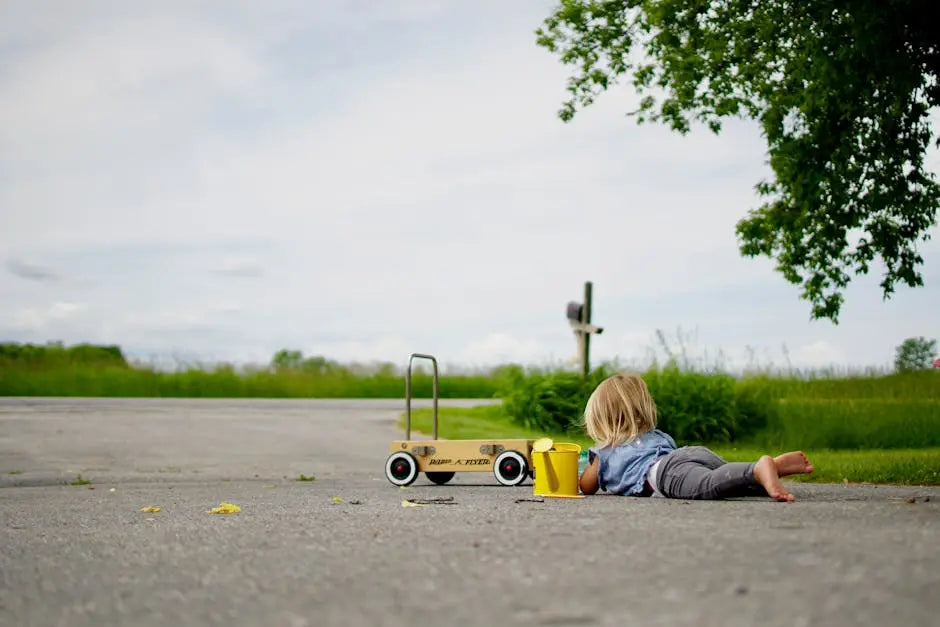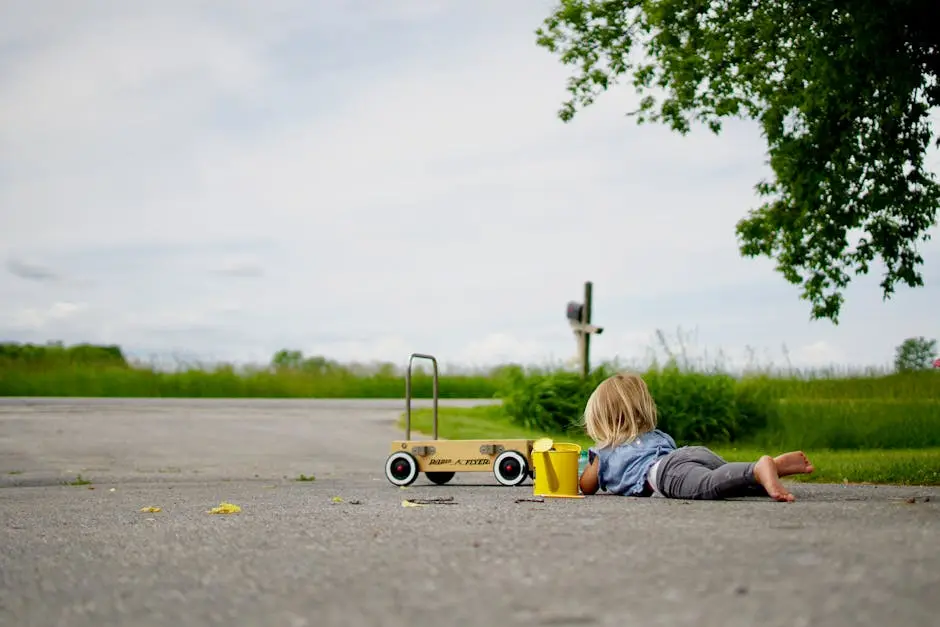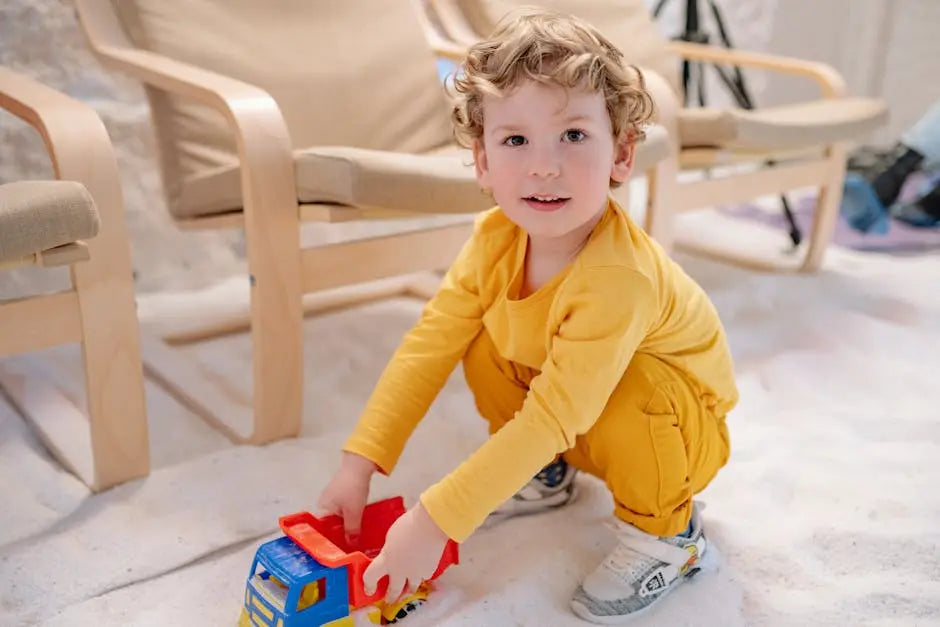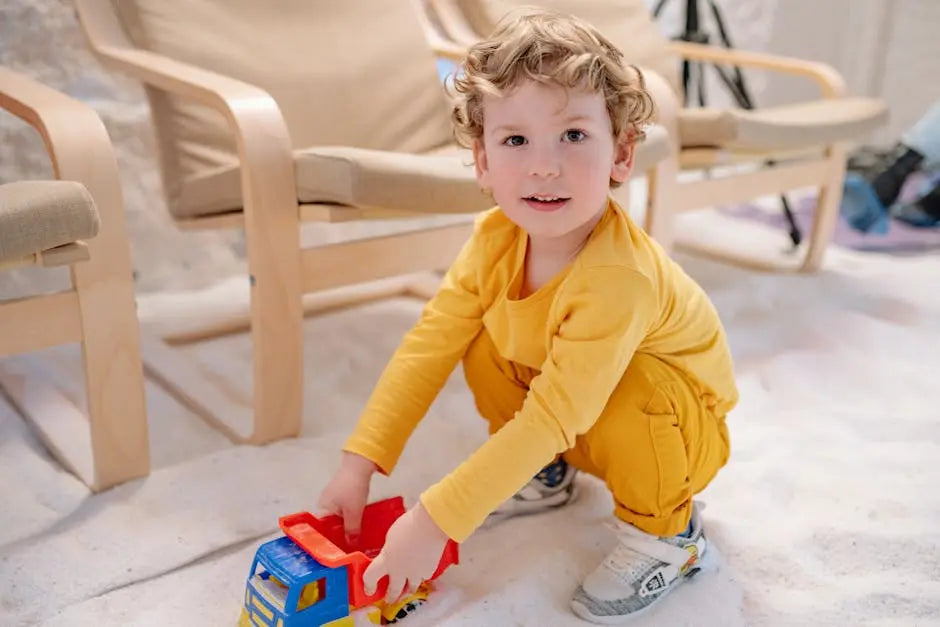Rideable construction toys can provide endless fun for young children, but safety is paramount when your little ones experience the thrill of riding. In this post, we’ll explore important safety tips to ensure that playtime is both exciting and secure. Read on for practical advice that can help you keep the kids safe while they enjoy their new favorite toys.
1. Choose the Right Size Toy
Selecting a rideable construction toy that fits your child’s size and age is crucial. Too large and it can be unwieldy; too small and it might be unsafe. Think about it: a child struggling to balance on a toy that’s too big could easily find themselves in a precarious situation. This is why carefully considering the manufacturer’s recommended age and weight limits is vital.
Moreover, children grow quickly, so always reassess their toys periodically. What was right for them a few months ago might no longer be suitable. If your child has outgrown their current toy, invest in a more appropriate size. Remember, the right fit not only enhances safety but also boosts their confidence as they ride comfortably and securely.
2. Inspect for Safety Features
When it comes to rideable construction toys, safety features are non-negotiable. Always look for essential features such as seat belts and a sturdy construction. A toy with these safety features can significantly reduce the risk of accidents. Imagine a windy day; the last thing you want is for your little rider to lose their grip and tumble off. So, before any playtime begins, conduct a thorough inspection.
Beyond the basics, also check for non-slip materials, especially for the wheels and seat. These materials enhance grip and stability during rides. An added sprinkle of caution goes a long way. Investing a few minutes into inspecting your child’s toy can make all the difference in ensuring a fun and hazard-free experience.
3. Use on Safe Surfaces
Always allow children to ride on flat, even surfaces free of obstacles like gravel or puddles. A smooth surface helps prevent accidents and provides a better riding experience overall. Picture your child zooming down a driveway—it’s a lot of fun until a hidden rock trips them up. It’s crucial to set the scene for safety as much as for enjoyment.
Consider designating a safe riding area in your backyard or a nearby park. Not only does this allow for better control of the environment, but it also gives your child a consistent place to explore their new rideable construction toys safely. The right surface transforms an ordinary ride into an adventure without the worry of bumps and slip-ups.
4. Supervise During Play
Never leave children unattended while they are riding. Adult supervision is essential to watch for potential hazards and accidents. It’s easy to get distracted, that’s why having adults nearby can provide a safety net of vigilance. When kids are riding, they often have their focus on fun, so having someone to guide and watch over their play is invaluable.
Take turns between parents or caregivers so one can always keep an eye on the children while the other takes a moment of rest. If your child is riding with friends, encourage group play but reinforce the necessity of adult oversight. This way, everyone can have fun while you ensure their safety. Being present ensures a happier and safer experience!
5. Wear Appropriate Safety Gear
Encourage kids to wear helmets and knee pads to protect themselves while riding. It’s a small step that makes a big difference! A helmet can prevent serious injury in case of falls, while knee pads offer vital cushioning. Remember, the goal isn’t to limit your child’s fun, but to enhance it by providing a protective layer against potential mishaps.
Make it a fun ritual before heading out for a ride; turn putting on the gear into part of the game. You might inspire your little ones to not only wear safety gear but to encourage their friends to do the same. Plus, you get double the peace of mind: knowing your child is safe and cultivating a culture of safety among their peers.
6. Teach Safe Riding Practices
Educate children about slow speeds and safe turning practices to lessen the chances of falls and collisions. Start with simple discussions, explaining why we need to ride safely while keeping the fun intact. Young children often mimic the behavior of others, so being a role model is key—show them how it’s done!
You can turn your safety briefings into engaging activities, perhaps using a toy or illustrations to demonstrate how to navigate turns safely. Remind them that riding isn’t just about speed; it’s about enjoying the journey. Setting foundational safe riding practices will ensure they still get that thrill while taking necessary precautions.
7. Avoid Busy Areas
Keep playtime away from roads, sidewalks, and crowded spaces. This reduces the risk of accidents with pedestrians or vehicles. Safety should always come first, and the hustle and bustle of public roads can pose substantial threats. Ensure that when your little ones are playing, they have plenty of space to move around freely and safely.
Consider planning playdates in enclosed gardens or local parks where crowds are manageable. Familiar environments also allow children to become comfortable and confident in their riding abilities without the distractions of cars zipping by or people passing through. By choosing the right play area, you set the stage for play that is both enjoyable and safe.
8. Check for Loose Parts
Regularly inspect the toy for any loose screws or parts that may have come undone, as these can pose serious safety risks. Just like checking a bike before riding, ensuring the stability of their rideable construction toys can keep the fun going without any nasty surprises. Make it a habit to conduct these checks routinely—perhaps weekly or bi-weekly.
Creating a checklist can simplify this process. This could include inspecting for visible wear and tear, testing the toys for sturdiness, and ensuring that everything is tightly secured. Not only does this routine keep the toy in good condition, but it also instills a practical safety mindset in your child that they can carry into other areas of life.
9. Limit Riders for One at a Time
Avoid allowing multiple children to ride at once. Many rideable toys are designed for single occupancy to ensure stability. Picture the chaos that can ensue if two small children try riding a single toy at the same time—there are bound to be tumbles! Setting clear rules about riding solo is an important safety measure.
When friends come over to play, emphasize the importance of waiting for their turn. Encourage them to have pretend competitions on who has the fastest ride instead. This not only maintains safety but can also foster patience and good sportsmanship among peers. Reinforce that safe play often leads to the most enjoyable riding experience!
10. Set Clear Play Boundaries
Establish boundaries for where kids can ride, perhaps a designated play area, to minimize the risk of accidents. Having clear expectations helps children understand where their adventures begin and end. It may be helpful to use markers or cones to illustrate this designated area, making boundaries visually engaging.
Involve your children in deciding these boundaries, emphasizing the importance of knowing their limits. This involvement will allow them to feel more ownership of their riding space. Plus, boundaries don’t have to be restrictive—they can also be seen as encouraging creativity within a safe environment.
11. Introduce the Toy Gradually
Let children familiarize themselves with the toy in a controlled environment before allowing them to ride it freely. This gradual introduction eases anxiety, builds confidence, and helps them understand how to handle the toy safely. Take small steps; let them sit on it first, practice pushing it around, and then assist them in learning to ride.
As they become more comfortable, slowly introduce short rides under close supervision. The transition can be an exciting adventure that allows them to embrace their new toy while ensuring safety remains a priority. By providing a supportive introduction, you’re setting the foundation for a love of riding that prioritizes fun and safety.
12. Emphasize Fun and Safety Balance
Finally, remind kids that having fun doesn’t mean disregarding safety. The two can go hand in hand for a joyful riding experience. Share stories of times safety prevented a mishap during play to illustrate your point. When children understand that safety measures are there to protect their joy, they become more receptive to following these guidelines.
Encourage children to be proactive in their safety by regularly checking their gear, watching out for others, and communicating during play. When fun is paired with awareness and responsibility, your children will grow not only as safe riders but as thoughtful playmates. This balance can pave the way for a delightful and safe riding journey that lasts a lifetime.




Leave a comment
This site is protected by hCaptcha and the hCaptcha Privacy Policy and Terms of Service apply.